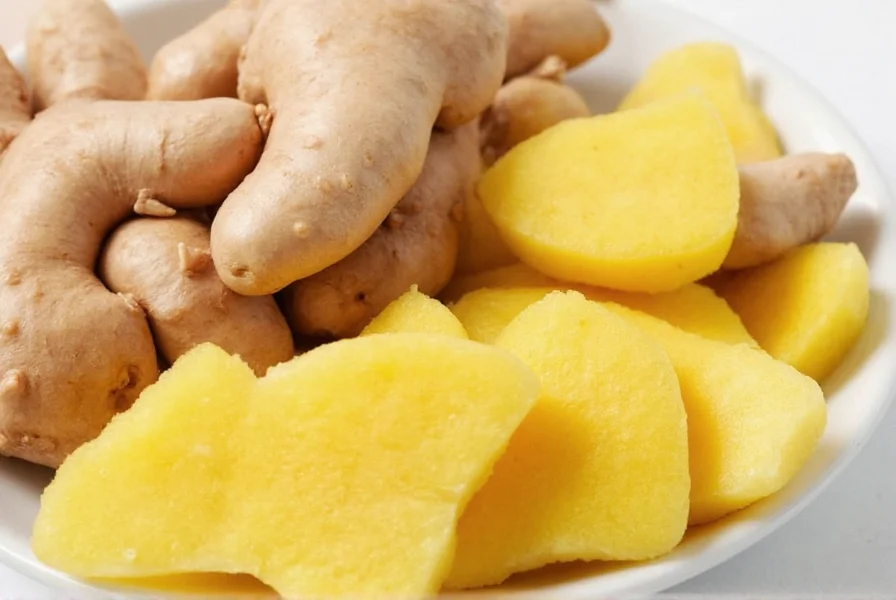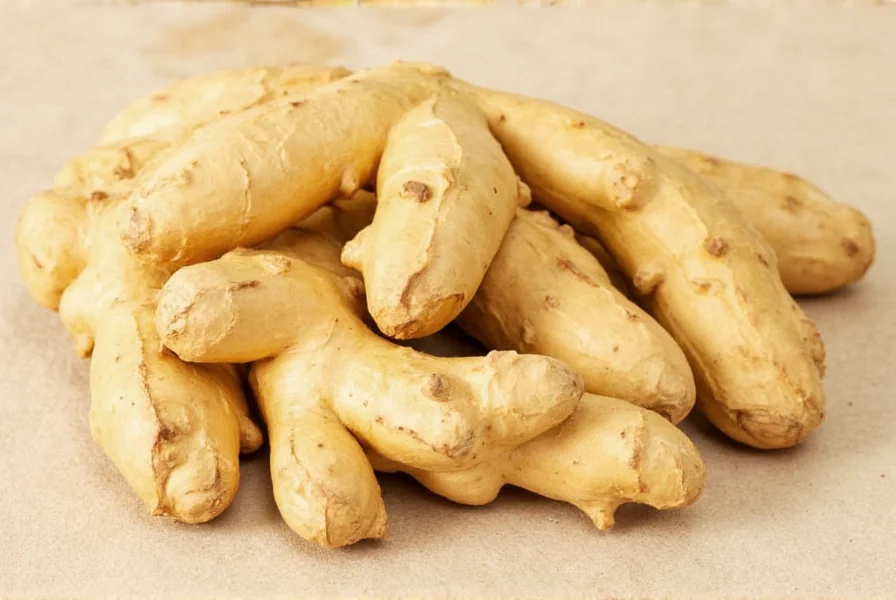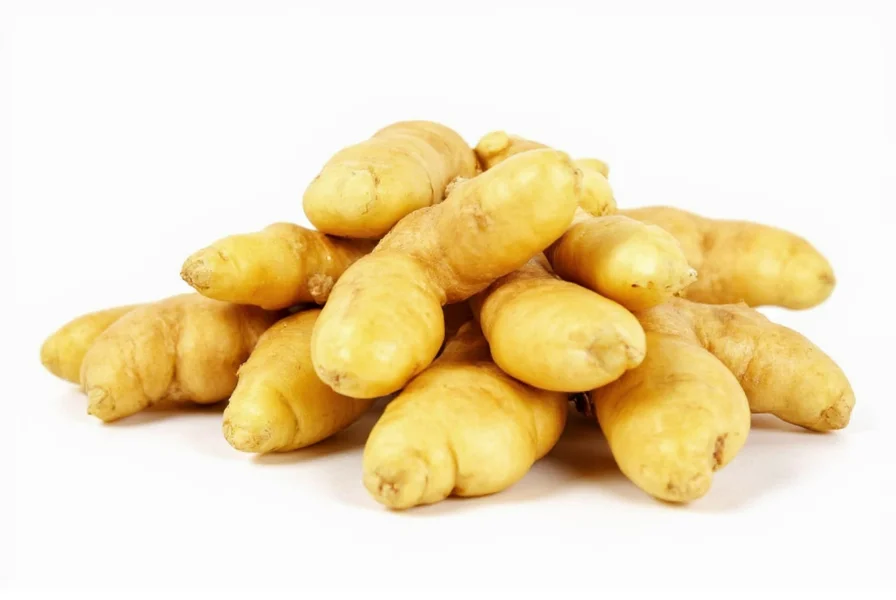When searching for "ty ginger," most users are actually looking for information about Thai ginger—a frequent misspelling due to the proximity of "y" and "i" keys on standard keyboards. This aromatic rhizome differs significantly from the standard grocery store ginger (often called Chinese or Jamaican ginger) in both appearance and culinary application.
Understanding Thai Ginger Characteristics
Thai ginger stands out with several distinctive features that make it valuable in specific culinary contexts. Its pale yellow to almost white flesh contrasts with the deeper yellow of common ginger varieties. The skin is notably thinner and smoother, often requiring less peeling before use. Most importantly, its flavor profile is more nuanced—less pungent and fiery than regular ginger, with subtle citrus and floral notes that complement rather than dominate dishes.

Thai Ginger vs. Regular Ginger: Key Differences
| Characteristic | Thai Ginger | Regular Ginger |
|---|---|---|
| Appearance | Pale yellow flesh, thin smooth skin | Bright yellow flesh, thicker fibrous skin |
| Flavor Profile | Milder, floral, subtle citrus notes | Stronger, more pungent, sharper heat |
| Culinary Best Uses | Curries, soups, delicate sauces | Baking, strong-flavored dishes, preserves |
| Availability | Specialty Asian markets, select grocers | Widely available in most supermarkets |
Culinary Applications of Thai Ginger
Chefs specializing in Southeast Asian cuisine prize Thai ginger for its ability to enhance dishes without overwhelming other ingredients. In traditional Thai cooking, it appears in:
- Tom Kha Gai (coconut soup) where it provides aromatic warmth without excessive heat
- Green Curry Pastes contributing to the complex flavor base
- Stir-fries with seafood or poultry where stronger ginger would dominate
- Marinades for delicate proteins like fish and chicken
The milder nature of Thai ginger makes it particularly suitable for dishes served cold or at room temperature, where the sharper bite of regular ginger might become unpleasant as it cools.
Sourcing Thai Ginger and Effective Substitutes
Finding authentic Thai ginger requires knowing where to look. While not as ubiquitous as regular ginger, it's increasingly available at:
- Specialty Asian grocery stores (particularly Thai, Vietnamese, or Cambodian markets)
- Farmers' markets in regions with Southeast Asian farming communities
- Some high-end grocery chains with robust international produce sections
- Online specialty produce retailers (seasonally available)
When Thai ginger proves unavailable, consider these substitution strategies for Southeast Asian recipes:
- Use regular ginger but reduce quantity by 25-30% to compensate for stronger flavor
- Add a small pinch of lemon zest to mimic Thai ginger's citrus notes
- Combine regular ginger with a touch of galangal for more authentic flavor complexity
- For cold dishes, consider using young ginger which has a milder profile

Evidence-Based Health Considerations
While all ginger varieties share certain beneficial compounds, research suggests Thai ginger contains unique phytochemical profiles. Studies published in the Journal of Agricultural and Food Chemistry indicate Thai ginger has higher concentrations of certain volatile oils that contribute to its distinctive aroma. Like other ginger varieties, it contains gingerols and shogaols with documented anti-inflammatory properties.
When incorporating Thai ginger into your diet for potential health benefits, remember that fresh consumption provides more active compounds than dried or processed forms. The milder flavor makes it particularly suitable for teas and tonics where the harsher bite of regular ginger might be off-putting.
Proper Storage Techniques
Due to its thinner skin, Thai ginger requires slightly different storage approaches than regular ginger:
- Refrigerate in a paper bag inside the vegetable crisper (not plastic, which promotes moisture)
- Use within 1-2 weeks for optimal flavor (regular ginger often lasts 3-4 weeks)
- Freeze whole rhizomes for longer storage—thaw just before use
- Store with the root end (the part that was in the ground) facing down to preserve moisture
Understanding these storage nuances helps maintain the delicate flavor profile that makes Thai ginger valuable in specific culinary applications.
Is Thai ginger the same as galangal?
No, Thai ginger and galangal are distinct rhizomes. Galangal has a sharper, more peppery flavor with pine and citrus notes, while Thai ginger offers milder warmth with floral undertones. They're not interchangeable in traditional recipes.
Can I substitute regular ginger for Thai ginger in curry?
Yes, but reduce the amount by 25-30% to avoid overpowering the dish. For better results, add a small pinch of lemon zest to mimic Thai ginger's subtle citrus notes that regular ginger lacks.
Why is Thai ginger harder to find than regular ginger?
Thai ginger has thinner skin and higher moisture content, making it less durable for long-distance shipping and extended shelf life. Most commercial distribution favors the hardier regular ginger varieties that withstand transportation better.
Does Thai ginger have different health benefits than regular ginger?
Both contain similar beneficial compounds like gingerols, but Thai ginger has a distinct phytochemical profile with higher concentrations of certain volatile oils. Research suggests potential differences in anti-inflammatory effects, though more studies are needed specifically on Thai ginger varieties.











 浙公网安备
33010002000092号
浙公网安备
33010002000092号 浙B2-20120091-4
浙B2-20120091-4